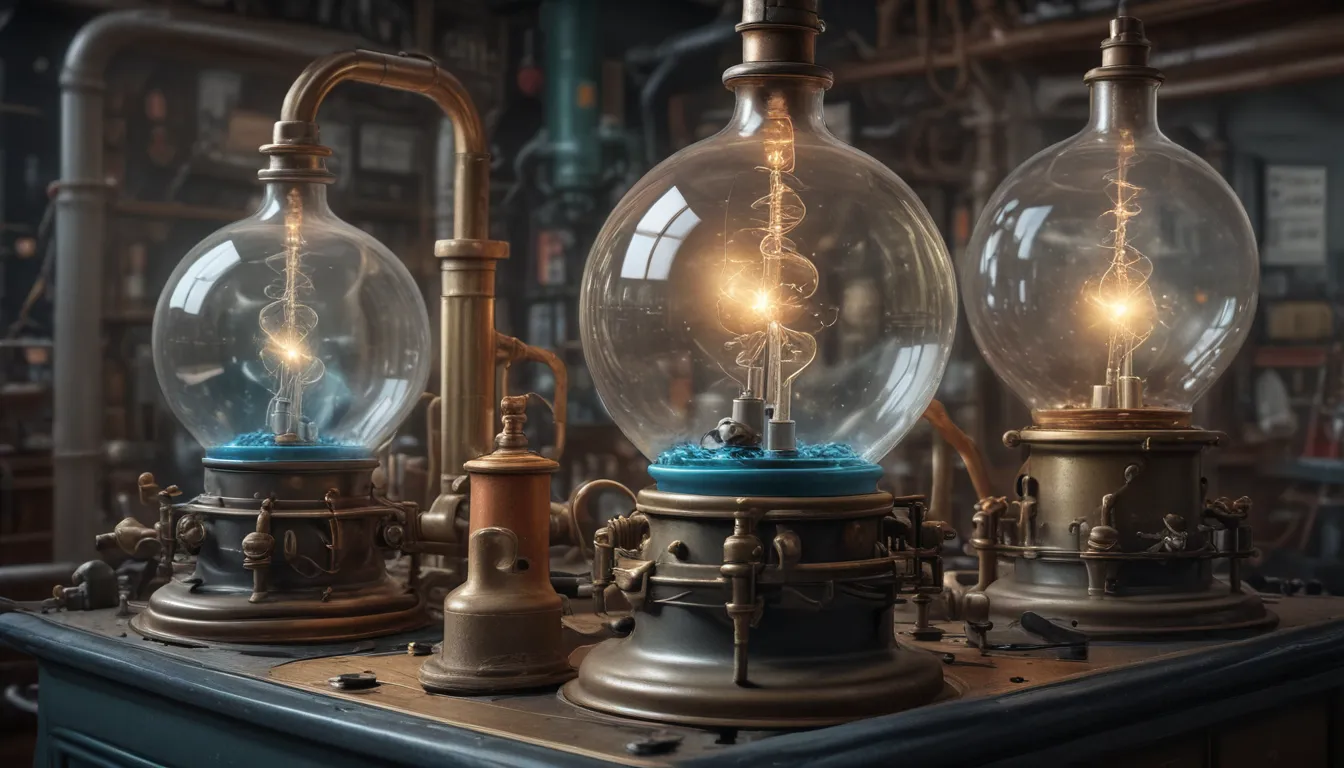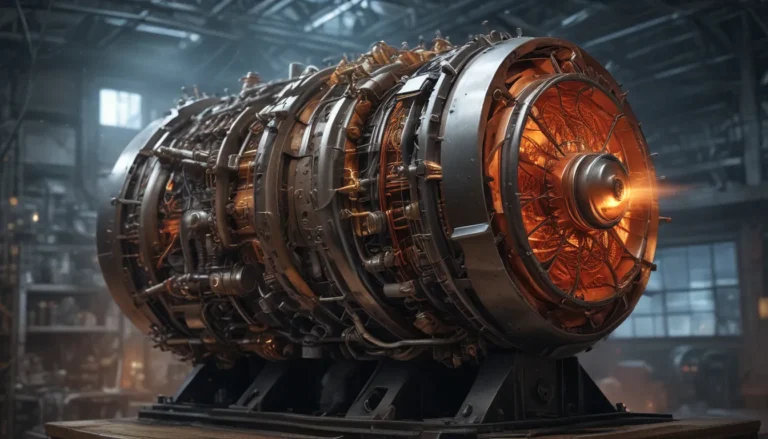A Note About Images: The images used in our articles are for illustration purposes only and may not exactly match the content. They are meant to engage readers, but the text should be relied upon for accurate information.
Welcome to the captivating realm of gas laws, where we unravel the intricate behaviors of gases under different conditions. Gas laws are not just scientific principles; they are the rules that govern how gases interact and behave. From the everyday occurrences of inflating a balloon to the advanced applications in understanding atmospheric properties, gas laws are integral to our comprehension of the physical world.
Let’s embark on a journey through the fascinating domain of gas laws, where we uncover extraordinary facts that will not only expand your knowledge but also ignite your curiosity. Join us as we explore the relationship between temperature and pressure, the principles behind Boyle’s Law and Charles’s Law, and the significant concepts that shape the behavior of gases.
Understanding Gas Laws: Key Takeaways
- Gas laws, such as Boyle’s and Charles’s laws, serve as guidelines that define how gases respond to changes in pressure, volume, temperature, and the amount of gas. These laws have practical applications in diverse fields, from scuba diving to hot air balloons, offering insights into the behavior of gases in various scenarios.
- Avogadro’s and Dalton’s laws shed light on how gases interact and function under different conditions, aiding scientists and engineers in comprehending phenomena like gas exchange in our lungs and the diffusion of gases.
Exploring Boyle’s Law: The Relationship Between Pressure and Volume
Boyle’s Law, named after the eminent physicist Robert Boyle, elucidates that the pressure of a gas is inversely proportional to its volume when the temperature remains constant. This principle guides us in understanding how changes in volume affect gas pressure and vice versa. Boyle’s Law plays a vital role in practical applications such as operating scuba diving regulators.
Unveiling Charles’s Law: The Link Between Temperature and Volume
Charles’s Law, attributed to the renowned physicist Jacques Charles, correlates the volume of a gas to its temperature at constant pressure. According to this law, as the temperature of a gas rises, its volume increases proportionally, and conversely, as the temperature decreases, the volume contracts. This fundamental relationship is fundamental in phenomena like the expansion of hot air balloons and the operation of internal combustion engines.
Deciphering Avogadro’s Law: The Connection Between Volume and Gas Amount
Avogadro’s Law, which delves into the equal volumes of gases containing an equal number of molecules, highlights the significance of the mole concept. Doubling the number of moles of gas while maintaining constant temperature and pressure results in a proportional increase in gas volume. This law holds critical applications in various scientific disciplines, aiding in calculations like the molar volume of gases.
Grasping the Ideal Gas Law: A Comprehensive Equation
The Ideal Gas Law amalgamates Boyle’s Law, Charles’s Law, and Avogadro’s Law into a unified equation that elucidates the behavior of gases under varying conditions. Expressed as PV = nRT, where P signifies pressure, V denotes volume, n represents the number of gas moles, R is the ideal gas constant, and T stands for temperature in Kelvin, this equation provides a comprehensive understanding of gas behavior.
Delving into Dalton’s Law of Partial Pressures
Dalton’s Law expounds that the total pressure exerted by a mixture of non-reacting gases equals the sum of their individual partial pressures. This law is instrumental in various applications, from understanding gas exchange in the lungs to calculating the composition of Earth’s atmosphere, offering insights into the complexities of gas interactions.
Uncovering Graham’s Law of Effusion: The Rate of Gas Diffusion
Graham’s Law of Effusion reveals that the diffusion rate of a gas is inversely proportional to the square root of its molar mass, indicating that lighter gases diffuse faster than heavier ones. This principle finds applications in chemical reactions and the design of efficient gas separation processes, enhancing our understanding of gas behavior.
Embracing the Boyle-Mariotte Law: Gas Behavior Under Pressure and Temperature Changes
The Boyle-Mariotte Law illustrates that for a fixed amount of gas at a constant temperature, pressure and volume exhibit an inverse relationship. This principle aids in studying gas behavior in closed systems and analyzing the effects of pressure alterations on gas properties, providing valuable insights into gas dynamics.
Examining Gay-Lussac’s Law: The Link Between Pressure and Temperature
Gay-Lussac’s Law elucidates the direct proportionality between gas pressure and temperature under constant volume conditions. This law plays a pivotal role in applications such as combustion engines, shedding light on the impact of temperature variations on gas pressure, offering crucial insights into gas dynamics.
In Conclusion
Gas laws serve as foundational principles that govern the behavior of gases, sparking curiosity and expanding our knowledge of the physical world. This exploration into gas laws has unearthed extraordinary facts, unveiling the interconnected nature of pressure, volume, temperature, and gas amount. Gas laws offer universal applicability, guiding our understanding of gases on Earth and beyond, illuminating the elegance and precision of these principles. Whether predicting weather patterns or optimizing industrial processes, gas laws are indispensable tools that unravel the mysteries of gas behavior.
Frequently Asked Questions
- What are the fundamental gas laws?
-
The fundamental gas laws include Boyle’s law, Charles’s law, and Avogadro’s law, elucidating the relationships between pressure, volume, temperature, and gas amount.
-
How are gas laws applied in everyday life?
-
Gas laws find applications in various scenarios, explaining phenomena like balloon expansion, scuba diving regulations, and temperature-related gas behaviors in daily life.
-
Can gas laws be applied to all types of gases?
-
Yes, gas laws are universally applicable to all gases, with minor deviations at extreme pressures and temperatures from ideal gas behavior.
-
What is the significance of gas laws in industrial processes?
-
Gas laws play a vital role in industrial processes such as refrigeration and combustion engines, providing insights into gas behavior and facilitating efficient system design.
-
How do gas laws contribute to the study of weather?
- Gas laws are indispensable in meteorology, aiding in weather predictions, atmospheric pressure analysis, and air mass movement studies, enhancing our understanding of atmospheric phenomena.
Dive deeper into the enchanting world of gas laws, where extraordinary facts abound, waiting to be discovered by curious minds. Unlock the mysteries of ideal gas behavior and witness the profound impact of gas laws on our understanding of the physical universe.






